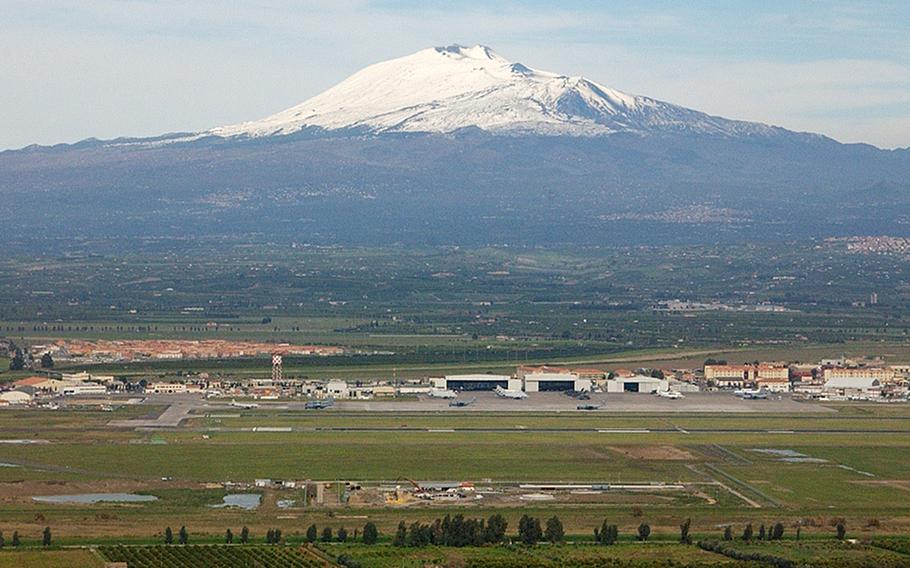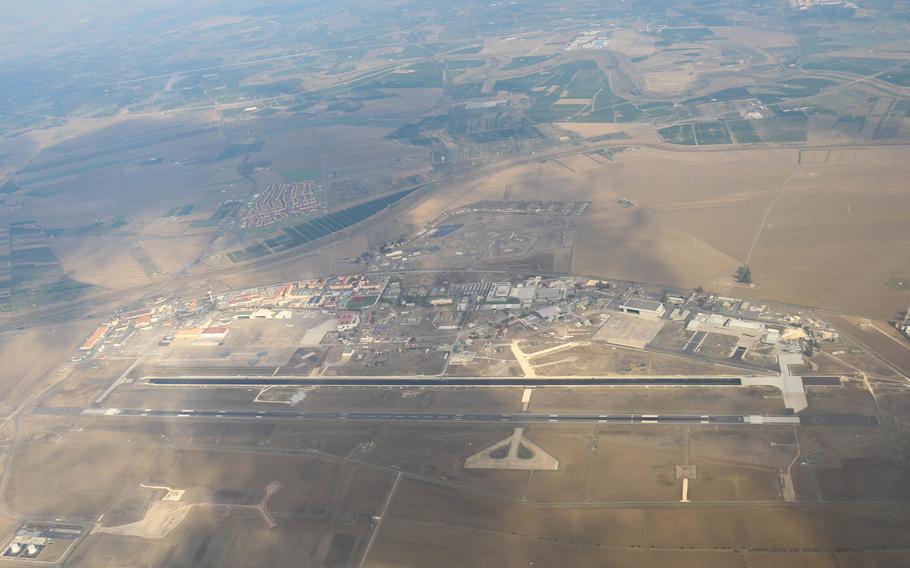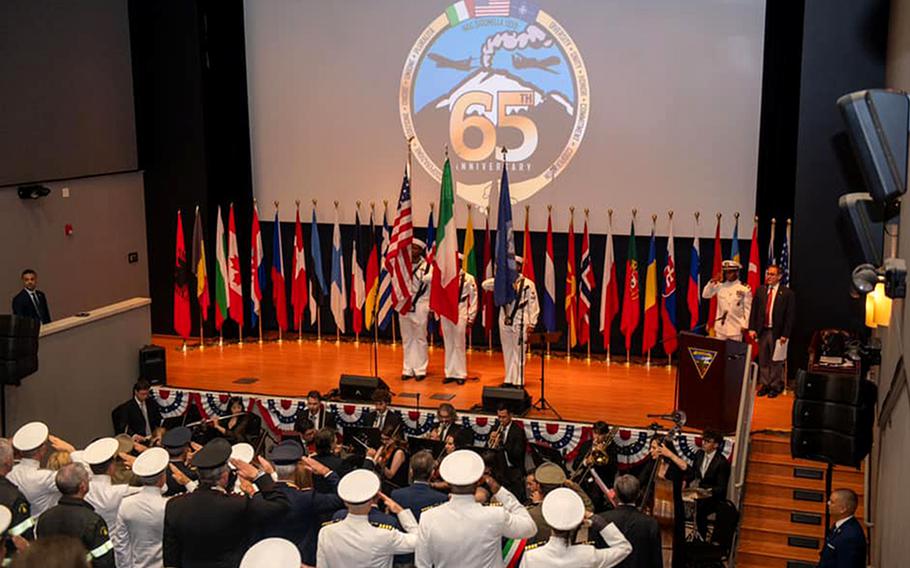
Naval Air Station Sigonella in Sicily, with Mt. Etna in the distance. Since being established in 1959, NAS Sigonella has grown from a single airstrip to a hub with more than 40 commands. It recently celebrated its 65th anniversary. (U.S. Navy)
NAPLES, Italy — When Paolo Graziano arrived to work at Naval Air Station Sigonella in Sicily more than four decades ago, the base had only a handful of aircraft hangars.
Today, NAS Sigonella has grown to 1,300 acres and about 40 tenant commands, among them Space Force, Army, Marines and Air Force detachments. The military community of more than 6,000 also includes civilians, service member families and Italian workers, according to Navy figures.
NATO’s Alliance Ground Surveillance main operating base, including all five of its RQ-4D Phoenix remotely piloted aircraft, also calls NAS Sigonella home.
Looking back on that growth as the base celebrated its 65th anniversary earlier this month, Graziano counted several construction and engineering projects, such as one replacing an aging JP-5 jet fuel facility around 1992. That facility also included a land purchase that doubled the size of the base’s operations site, he said.
“We did a good job allowing NAS Sigonella to be open to new operations, new forces,” said Graziano, an engineer and planner for Naval Facilities Engineering Systems Command, whose career at the base started in 1982.

A view of Naval Air Station Sigonella in Sicily from a P-8 Poseidon on Nov. 12, 2022. The base, which recently celebrated its 65th anniversary, plays a part in a variety of U.S. and NATO operations. (Andy A. Anderson/U.S. Navy)
The base now comprises an administrative site called NAS I and an operations site, NAS II, about 7 miles away. It also operates a support facility at a nearby NATO pier and a separate naval radio transmitter facility, according to the installation’s website.
NAS Sigonella was established on June 15, 1959, primarily to house a P-2V Neptune patrol and anti-submarine unit that was stationed at a British air base in Malta.
Its location originally was an abandoned World War II Axis airfield that included communication tunnels, command structures and an ammunition dump that eventually were built over, the Navy said.
Construction on the base, then designated a naval air facility, began in September 1957, with its airfield ready for daylight flights in August 1959. By the end of November that year, there were 359 personnel assigned to the base. A further 234 were in deployed squadrons, according to the Navy.
When now-Capt. Aaron Shoemaker arrived at Sigonella in 2001 for a six-month deployment as a P-3 Orion pilot assigned to Patrol Squadron 26, or VP-26, the base’s current commissary and exchange had not been built. Neither had a family housing complex now near NAS II, he said.
Now the NAS Sigonella commander, Shoemaker didn’t make many observations of the base as a young pilot at the time. His focus was more on the busy operational tempo, which included missions related to conflict in Eastern Europe, he said.
But he did notice that the local Sicilian community treated U.S. personnel like family, an impression reinforced during a subsequent deployment in 2010 and again when Shoemaker took charge in April 2022.
“It’s as true now as it’s ever been,” he said.
Shoemaker believes that the relationship is rooted in the shared sacrifices of the Allied invasion of Sicily, or Operation Husky, nearly 81 years ago.
“There is an understanding of what things like liberty and democracy mean in a country that was once occupied by Nazi fascism,” he said. “This continent dealt with occupation, and that is not something that the U.S. has ever had to contend with like the European theater has.”
That context, along with NAS Sigonella’s establishment some 10 years after the formation of NATO, is important in recognizing the base’s milestone anniversary, as well as the installation’s growing role within in the alliance, he said.
“There are things going on the world that want to challenge those ideals and values that NATO represents,” said Shoemaker, alluding to Russia’s military campaign in Ukraine, Houthi threats in the Red Sea and the Israel-Hamas war. “You can’t assure those values if you aren’t in the area where conflicts are happening, or you can’t reach them.”

Sailors salute during a ceremony June 15, 2024, marking the 65th anniversary of Naval Air Station Sigonella on the Italian island of Sicily. (NAS Sigonella Facebook)